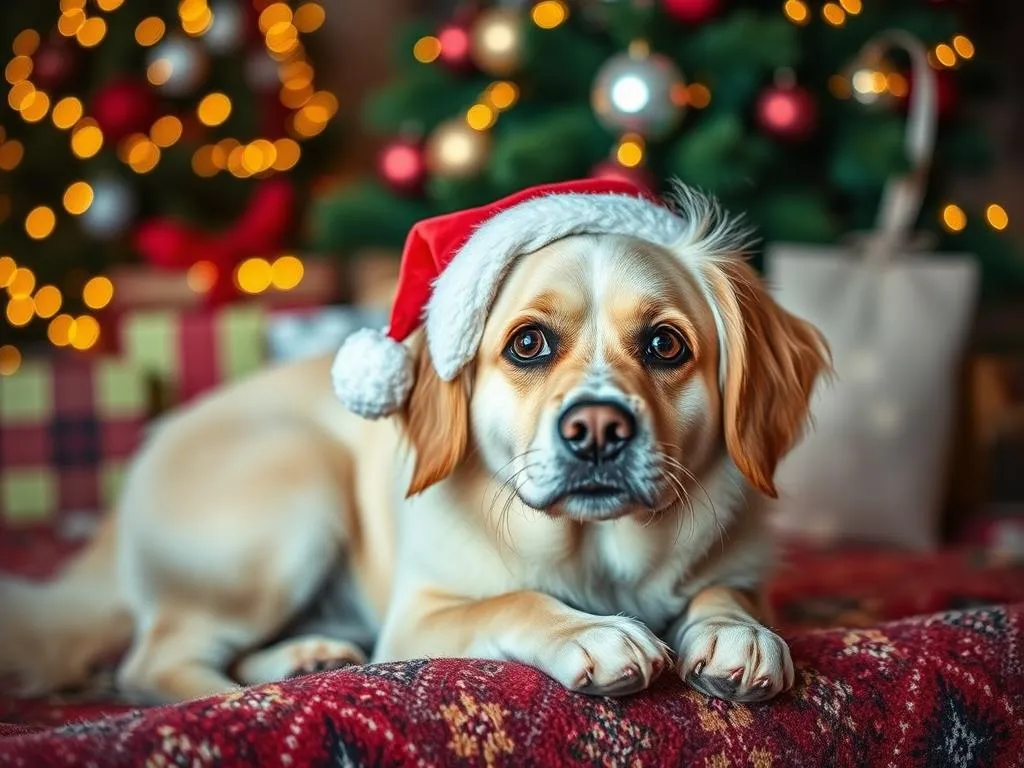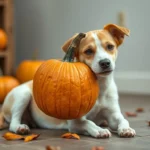
The holiday season is a time of joy and celebration, but it also brings a unique set of risks for our furry friends. As pet owners, it’s crucial to prioritize dog health care during this festive time to ensure our pets remain safe and healthy. From decorations to food items, understanding the potential hazards can help prevent accidents and stress. Here are some essential Christmas holiday safety tips for dogs to keep your beloved companion safe throughout the festivities.
Understanding the Risks of the Christmas Season
Common Holiday Hazards
During the Christmas season, households are often adorned with various decorations, many of which can pose a risk to dogs. Tinsel and ornaments can be particularly enticing, but they can also lead to choking hazards or intestinal blockages if ingested. Additionally, the glittering lights and cords can be tempting for curious pets, increasing the risk of electrical hazards.
Food items are another significant concern during the holidays. Popular treats like chocolate, nuts, and even grapes can be toxic to dogs. It’s essential to be vigilant about what’s accessible to them during gatherings, as well as the potential for food-related accidents.
Certain holiday plants, such as poinsettias, mistletoe, and holly, can also be toxic. These beautiful decorations can lead to serious health issues if ingested, making it crucial for dog owners to be aware of their presence in the home.
Increased Activity and Stress
The holiday season often brings increased activity, from bustling family gatherings to festive parties. This shift in routine can be stressful for dogs, especially those who thrive on consistency. The arrival of visitors, loud noises, and unfamiliar scents can lead to anxiety in our pets. It’s important to recognize these changes and take proactive steps to create a calm environment for our dogs.
Safe Holiday Decorations
Choosing Pet-Friendly Decor
When it comes to decorating for the holidays, consider opting for pet-friendly alternatives. Instead of fragile ornaments, consider using unbreakable or fabric decorations that won’t pose a choking hazard. Additionally, avoid using tinsel, which can be particularly dangerous if ingested.
Placement is also key to keeping decorations safe. Hang ornaments higher on the tree, out of reach of curious noses, and secure all decorations to prevent them from being knocked over by playful pets.
Managing Electrical Hazards
Electrical cords and lights are integral to holiday decorations but can pose risks to dogs. To keep cords safe from pets, consider using cord covers or running them along baseboards and walls where pets cannot access them. Keep an eye on your pet to prevent them from chewing on cords, which can lead to serious injuries.
Holiday Foods: What to Avoid
Toxic Foods for Dogs
The temptation to share holiday treats with our dogs can be strong, but many common foods are harmful or even toxic. Here’s a list of foods to avoid:
- Chocolate: Contains theobromine, which is toxic to dogs.
- Macadamia Nuts: Can cause weakness, tremors, and hyperthermia.
- Grapes and Raisins: Can lead to kidney failure.
- Onions and Garlic: Can cause gastrointestinal upset and damage to red blood cells.
- Alcohol: Even small amounts can be dangerous.
Signs of food poisoning in dogs can include vomiting, diarrhea, lethargy, and loss of appetite. If you suspect your dog has ingested something harmful, contact your veterinarian immediately.
Safe Treats for Dogs
While many holiday foods are off-limits, there are plenty of pet-safe treats you can offer your furry friend. Consider making homemade peanut butter or pumpkin dog treats. Here’s a simple recipe to try:
Peanut Butter Holiday Treats
- 1 cup whole wheat flour
- 1/2 cup rolled oats
- 1/2 cup peanut butter (ensure it’s xylitol-free)
- 1/4 cup chicken or beef broth
Mix all ingredients until combined. Roll out the dough and cut it into festive shapes. Bake at 350°F (175°C) for 15-20 minutes. Let them cool before serving!
Holiday Plants to Watch Out For
Identifying Toxic Plants
Several holiday plants can pose risks to dogs. Here’s a list of common toxic plants to be aware of:
- Poinsettias: Mildly toxic; can cause irritation to the mouth and stomach.
- Mistletoe: Can cause cardiovascular issues and gastrointestinal distress.
- Holly: Can lead to vomiting and diarrhea.
If you suspect your dog has ingested any part of these plants, monitor their behavior and consult your vet if you notice any concerning symptoms like vomiting, diarrhea, or lethargy.
Safe Plant Alternatives
If you want to decorate with plants while keeping your dog safe, consider using non-toxic alternatives such as Christmas cacti or bamboo palm. These plants are safe for pets and add a festive touch without the risk.
Managing Holiday Stress for Dogs
Creating a Calm Environment
With the hustle and bustle of the season, it’s vital to create a calm space for your dog. Designate a quiet room with their bed, favorite toys, and some calming music where they can retreat when feeling overwhelmed. Maintain a consistent routine as much as possible to help reduce anxiety.
Signs of Stress in Dogs
Watch for behavioral signs that indicate your dog is stressed, such as excessive barking, pacing, or hiding. If you notice these signs, it may be time to take a break from the festivities and allow your dog some quiet time. Consider using calming products such as anxiety wraps or pheromone diffusers to help ease their stress.
Travel Safety Tips for Dogs
Preparing for Travel
If you plan to travel with your dog during the holidays, preparation is key. Make a checklist to ensure you have everything you need, including a sturdy crate or a dog seatbelt for car travel. Having proper restraints is not only safer for your dog but also essential for keeping all passengers safe during the trip.
Ensure your dog has proper identification, such as a collar with a tag and a microchip. This can be a lifesaver if your dog gets lost while in an unfamiliar environment.
Traveling with Dogs
When traveling with your dog, ensure they are comfortable during the journey. Take regular breaks during car rides for bathroom breaks and stretching. If you’re staying in a pet-friendly hotel, make sure to familiarize your dog with the new environment gradually to help them adjust.
Keeping Dogs Warm and Comfortable
Winter Care Essentials
As temperatures drop, it’s important to consider your dog’s comfort. Invest in appropriate winter gear, such as a warm coat or booties, especially for small or short-haired breeds. If your dog enjoys outdoor activities, be mindful of the weather conditions and limit their time outside in extreme cold.
Indoor Comfort
Ensure your dog has a warm and cozy space indoors, away from drafts. Provide a comfortable bed and blankets to keep them snug. Special considerations should be made for senior dogs, as they may need extra warmth and comfort during colder months.
Emergency Preparedness
First Aid for Dogs
Being prepared for emergencies is crucial. Familiarize yourself with basic first aid tips for dogs, such as how to treat minor cuts or perform the Heimlich maneuver. Keeping a pet first aid kit on hand can be beneficial. Essential items to include are:
- Sterile gauze and bandages
- Antiseptic wipes
- Tweezers
- A digital thermometer
- Dog-safe pain relief
Emergency Contacts
Create a list of emergency veterinary clinics and contacts, including regular vet information. Having a plan in place for emergencies can provide peace of mind during the busy holiday season.
Conclusion
By implementing these Christmas holiday safety tips for dogs, you can ensure that your furry friends enjoy the festive season just as much as you do. Always be proactive in identifying potential hazards and creating a safe environment for your pets. Remember, the joy of the holiday season can be fully enjoyed when our pets are healthy and happy.
As you celebrate, keep in mind the importance of including your pets in the festivities while prioritizing their safety and well-being. Happy holidays to you and your furry companions!









